عادة شاي ما بعد الظهيرة ..تاريخها من القصور إلى البيوت
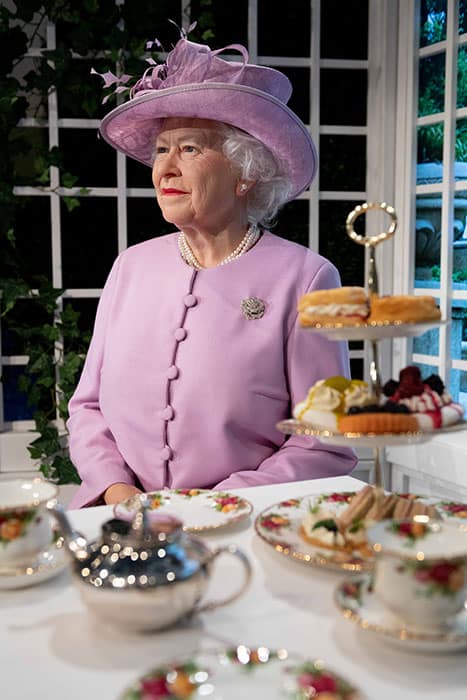
لا بد أن شاي مابعد الظهيرة وحفلات الشاي اصبحت تقاليدنا اجتماعية متوارثة ومنتشرة في مختلف بقاع الأرض لما فيها من اناقة وبهجة ،،لكن من اين جاءت تلك العادات المتوارثة ومن كانت اولى الشعوب اللواتي احتفلت بالشاي وموائده ،بعيدا عن ان الشاي يعمل تزويد الجسم بالسوائل اللازمة له من ناحية، ومن ناحية أخرى يجد أحياناً فيها وقتاً ممتعاً في احتسائها.
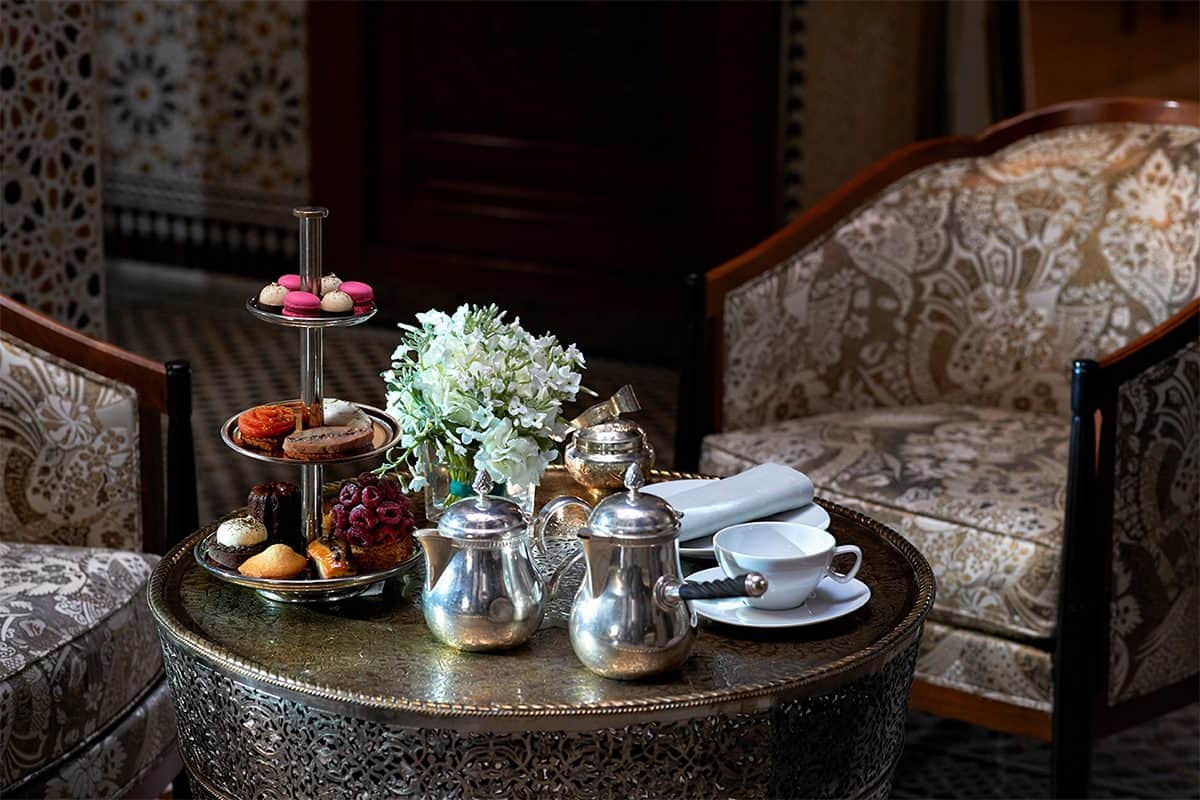
يعتبر الشاي عادة يومية تتكرّر مرات في اليوم الواحد، وأشهر المشروبات الساخنة المنتشرة في العالم الى جانب القهوة لكن حفلات الشاي اتطلقت من اوروبا الى العالم ، وخصوصاً من بريطانياً.
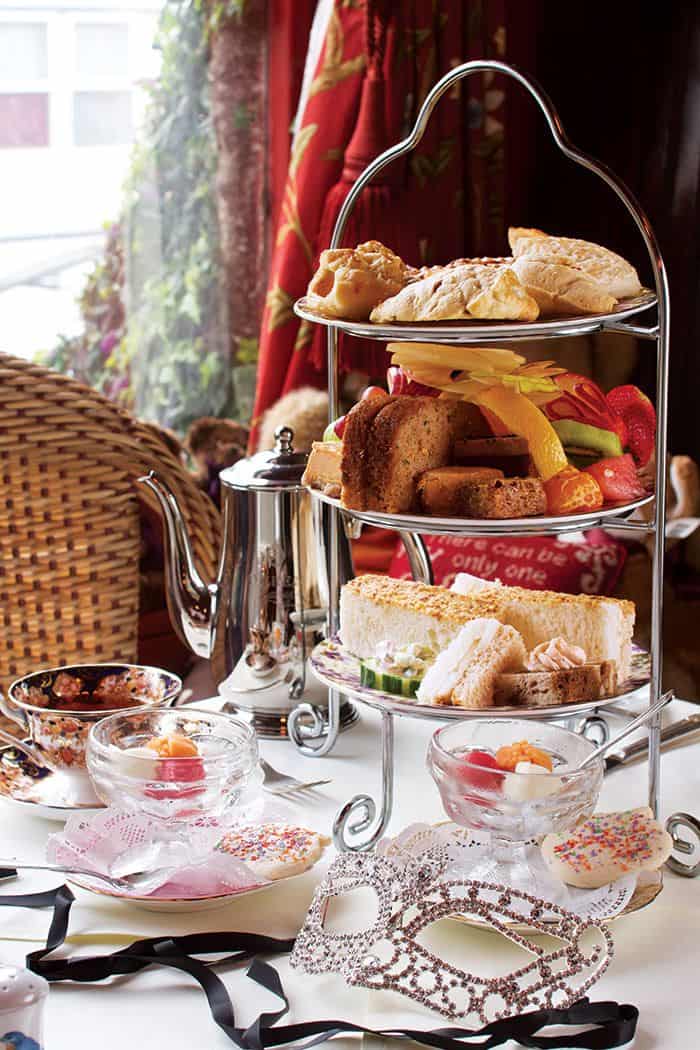
يعدّ الشاي المشروب الثاني الأكثر استهلاكاً على الأرض بعد الماء، حتى إنه يجد شهرة في كثير من الثقافات، وفي العديد من المناسبات الاجتماعية المختلفة، وقد وصل الأمر إلى ظهور ما يسمى بحفلات الشاي، خاصة في الصين واليابان حيث موطنه الأصلي، وفيها يتم التفنن في إظهار أنواع الشاي وطرق إعداده الحديثة، وفي الشرق الأوسط كذلك حيث يؤدّي الشاي دوراً رائداً في اللقاءات الاجتماعية.
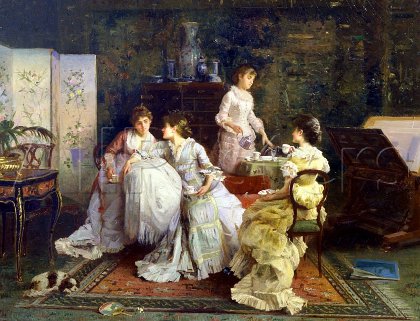
يقع الموطن الأصلي للشاي شرقي آسيا، وتذكر الروايات الصينية أن الملك “شينوق” هو من أدخل استعمال نقيع الشاي الساخن كمشروب إلى الصين؛ بعد أن اكتشف صدفة تأثير أوراق الشاي في الماء الساخن، ومن الصين انتقل الشاي إلى اليابان والهند، ثم إلى تركيا، التي أسهمت في انتشاره الواسع في المشرق.
وأهم الدول المنتجة له الهند، والصين، وسيلان، وإندونيسيا، واليابان، وأهم الدول المستوردة بريطانيا، والولايات المتحدة الأمريكية، وأستراليا، وروسيا.
أما في بريطانيا فيمكن وصف الشاي بأنه المشروب الوطني الأبرز فيها، حيث بدأت باستيراده منذ عام 1660، واسمه فيها لا يتعلّق بذلك المشروب الساخن فحسب، وإنما يرتبط بوجبة خفيفة يتناولها البريطانيون بعد الظهر، جدير بالذكر، حسب آخر الإحصاءات، أن البريطانيين يحتسون ما يزيد على 60 مليار كوب من الشاي سنوياً، بمعدل 2 كغ من الشاي للفرد الواحد سنوياً، الأمر الذي يدعو إلى التساؤل عن سبب هذا الإقبال الشديد على الشاي في بريطانيا، وما التأصيل التاريخي لهذه العادة؟
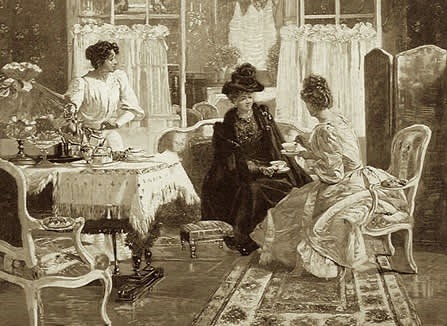
وفي التقصّي التاريخي لدخول الشاي إلى بريطانيا، نستأنس بنشرة “تي ميوز” البريطانية حول تاريخ الشاي في أوروبا، حيث تقول: “إن الشاي دخل أوروبا في القرن السابع عشر، وأصبحت فرنسا مولعة به، وبدأت الطبقات الأرستقراطية الفرنسية تشربه بكثرة، خصوصاً أن الملك لويس السادس عشر كان يعتقد أن شربه يساعده في التغلّب على مرض النقرس (داء تجلّط الدم بأصابع القدم)”.
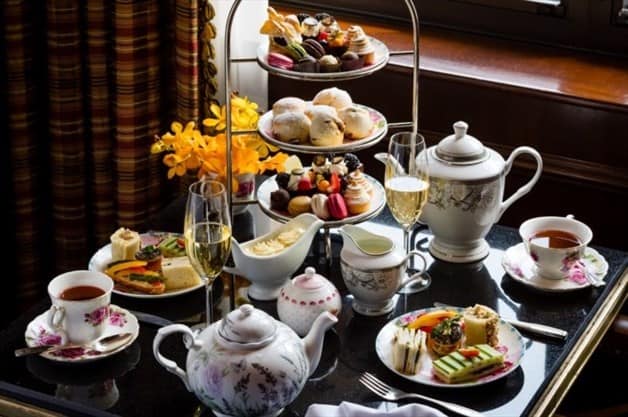
ودخل الشاي إلى فرنسا قبل إنجلترا بأكثر من 22 عاماً، وتستند “تي ميوز” إلى كتابات الفرنسية “مدام سيفين”، التي تُعتبر أهم مؤرّخة للتاريخ الاجتماعي الأوروبي في القرن السابع عشر، وحددت فترة دخول الشاي إلى إنجلترا مع زواج تشارلز الثاني من الأميرة كاثرين البرتغالية، 1622م، وبموجب هذا الزواج منحت البرتغال إنجلترا حق استخدام موانئها في مستعمراتها بأفريقيا وآسيا، ودخل الشاي إنجلترا بواسطة الطرق التجارية الجديدة.
ومع رجوع تشارلز الثاني مع زوجته البرتغالية إلى العرش، بعد أن عاشا في هولندا خلال فترة المنفى، بدأ يشرب الشاي بكثرة، ومع نهاية القرن السابع عشر أصبح المشروب الوطني في إنجلترا، خصوصاً مع تربّع الملكة آن على العرش، ويُقال إنه خلال هذه الفترة اشتكت الدوقة السابعة لبيدفورد “آنا” من الشعور بالنعاس في فترة ما بعد الظهيرة، وفي هذا الوقت كان من المعتاد أن يتناول الأفراد وجبتين فقط من الطعام خلال اليوم؛ وهما وجبتا الإفطار والعشاء، في حدود الساعة الـ 8 مساء، وكان الحل بالنسبة إلى الدوقة يتمثّل في شرب فنجان من الشاي وقطعة من الكيك التي تتناولها سرّاً في حجرة ملابسها في فترة ما بعد الظهيرة.
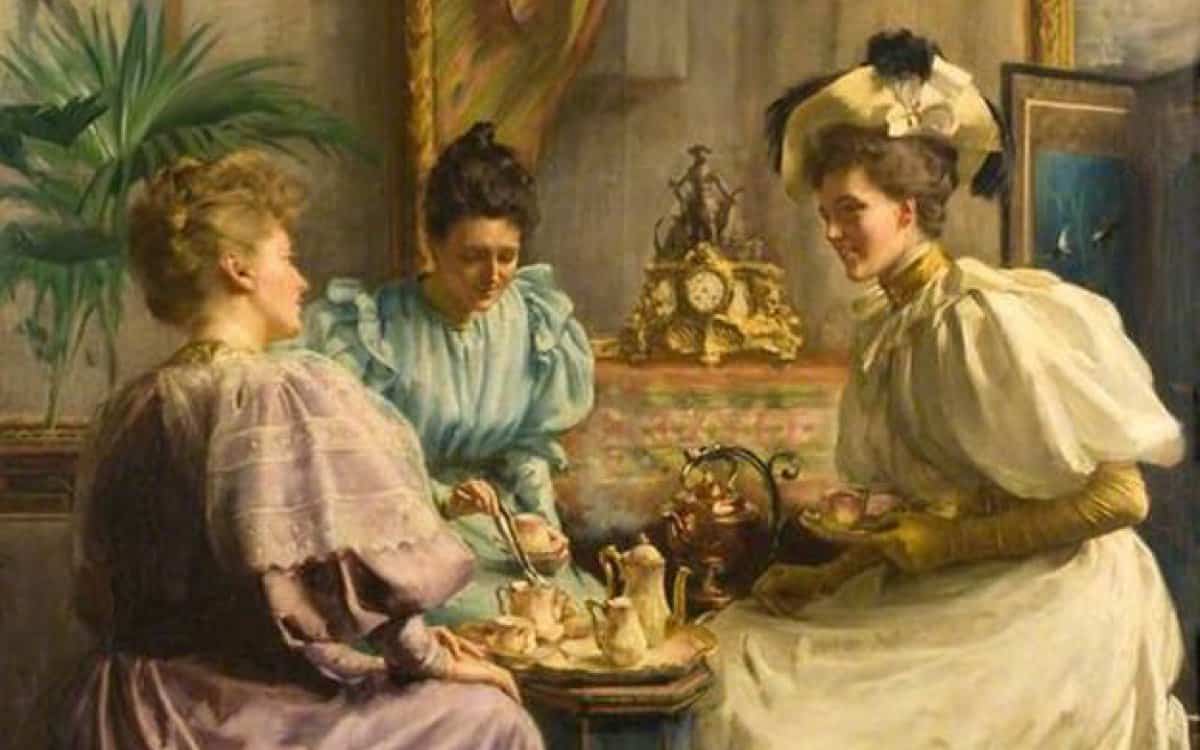
وبعد ذلك كانت الدوقة تدعو الأصدقاء لمشاركتها في وجبتها الخفيفة في الغرف الخاصة بها في ويبرن آبي، وقد أصبح ذلك تقليداً صيفياً، واستمرّت الدوقة على ذلك عندما عادت إلى لندن، حيث كانت ترسل بطاقات الدعوة إلى الأصدقاء لتطلب منهم شرب الشاي والسير بين الحقول.
وقد التقط أصحاب الطبقات الاجتماعية الراقية هذه الفكرة وهذا التقليد الذي أصبح ذا مكانةٍ رفيعةٍ، حتى إنه انتقل إلى غرف الرسم الخاصة بهؤلاء، وبعد ذلك حافظ معظم أفراد المجتمع الراقي على تناول بعض الوجبات الخفيفة في فترة ما بعد الظهيرة.
جدير بالذكر أيضاً أن الشاي في بريطانيا، إبان القرن السادس عشر، كان يباع بسعرٍ عالٍ؛ وصل الكيلو الواحد منه إلى 22 جنيهاً إسترلينياً، ما يعادل تقريباً ألفي جنيه إسترليني في يومنا هذا، وكان في بداياته يُستخدم للعلاج، ولما ازداد الطلب على الشاي، في بدايات القرن الثامن عشر، فرض التاج الملكي ضريبة على استيراده بقيمة 119%، ما زاد في ارتفاع سعره، وازدياد نسبة تهريبه إلى بريطانيا، الأمر الذي أدّى، بطريقة أو أخرى، إلى غشّ الشاي مع مواد أُخرى؛ كالصفصاف والسوس، وبقي الحال هكذا حتى عام 1784، عند إصدار قانون تخفيض الضريبة إلى 12%، الأمر الذي أوقف عمليات التهريب وتخفيف نسبة الغشّ فيه، حتى عام 1975، عندما صدر قانون بفرض عقوبات صارمة على كل من يثبت بحقه بيع أو شراء أو غشّ الشاي.
وبقي الشاي في بريطانيا المشروب الأول دون منازع بعد تلك الحقب، ما أدّى إلى الاستغناء عن الخمر إلى حدٍّ ما، واستبدال الشاي به.
ويفضّل الإنجليز شرب الشاي الأسود، والإيرل غراي، وشاي الياسمين الصيني، وانتشر مؤخراً الشاي الأخضر الياباني، ويضيفون السكر أو الحليب أو الليمون إليه، ويكثر شرب الشاي في أوقات محددة؛ مثل شاي الفراش في السادسة صباحاً، وشاي الـ 11 صباحاً، وآخر في وقت متأخر من اليوم.
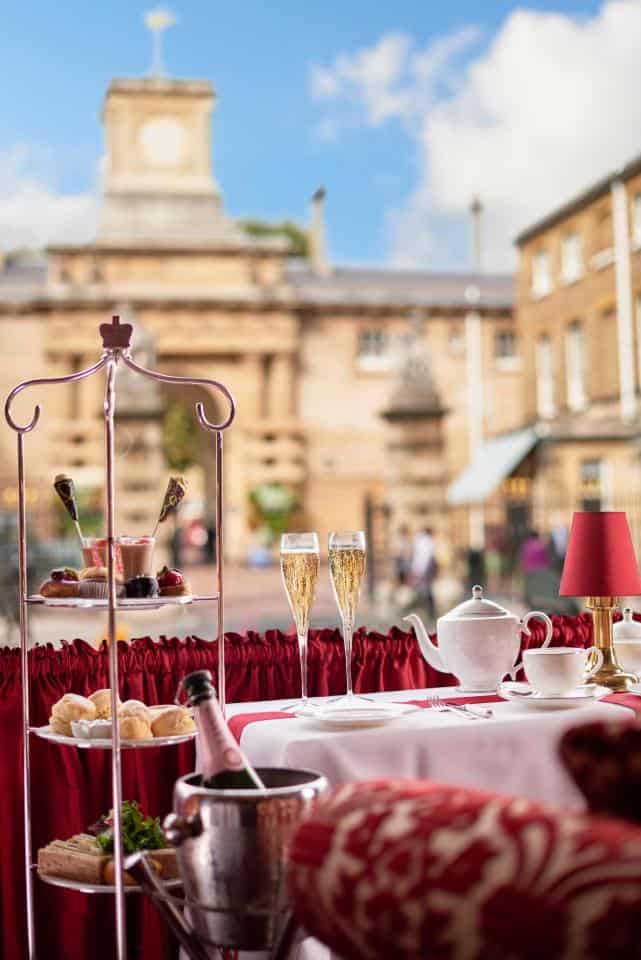
هانا كوران، بريطانية صاحبة متجر في مقاطعة يوركشاير الإنجليزية، تحدثت لـ “الخليج أونلاين” عن تجربتها مع الشاي الإنجليزي، حيث قالت: “كوني نشأت وترعرعت في عائلة إنجليزية في يوركشاير، كان الشاي دائماً جزءاً أصيلاً في حياتي، أذكر عندما تذوّقت أول رشفة شاي، كنت وقتها في الخامسة من عمري، أمّا في السابعة فكنت أشرب الشاي مع جدتي دائماً، وأنا أشرب الشاي طوال النهار، وأحياناً أشرب بالليل أيضاً، فكلما حظيت بقطعة من البسكويت أو الشوكولاتة فسأضطر إلى شرب الكثير من الشاي، وهو شيء مضرّ بصحتي أحياناً. باختصار نحن نشرب الشاي هنا مثلما نتنفس”.
وأضافت: “لقد اعتدت منذ صغري شرب الشاي الأصلي مضافاً إليه بعض من الحليب، وأذكر أن والدي كان يقول؛ لقد جعلوا أكياس الشاي تجتاح كل مكان، لأنه كان يحب أن يشرب الشاي الأصلي غير المعبّأ في الأكياس، وقال لي أيضاً؛ إننا نحن البريطانيين نشرب الشاي أكثر مما يشربه سكان أمريكا الشمالية وأوروبا مجتمعين”.
وتابعت كوران حديثها: “يتفاوت المفهوم الشعبي للشاي في المملكة المتحدة بشكل كبير لدى عشّاق الشاي، وأعتقد أن الشيء نفسه ينطبق أيضاً على الشوكولاتة والقهوة وغيرهما من المشروبات والأغذية، كنا نشرب الشاي بالحليب فقط، أما الآن فهناك الكثير من أنواع الشاي، حتى أصبحنا نقلّد بعض العادات الأمريكية في شرب الشاي المثلّج مثلاً، والذي كان يعتبر في السابق عادة غريبة”.
لقد بات الشاي إذن جزءاً من حياة الشعب البريطاني اليومية، يحتسونه في استراحاتهم المتواضعة أثناء يوم العمل، ويستمتعون به في حفلات الشاي، وهم يرتدون الأزياء الرسمية، بالطبع الجاكيت وربطة العنق للرجال، في أفخم فنادق لندن؛ فالبريطانيون يهتمون حقاً بكوب الشاي اليومي منذ تلك الفترة، واللافت أنه أمر موحّد بين جميع الأعمار، وفي شتى مجالات العمل تقريباً، ورغم أن شرب الشاي في وقت معيّن من اليوم يعد تقليداً قديماً، فإنه عاد من جديد في المؤسسات والشركات والدوائر الحكومية على اختلافها.







